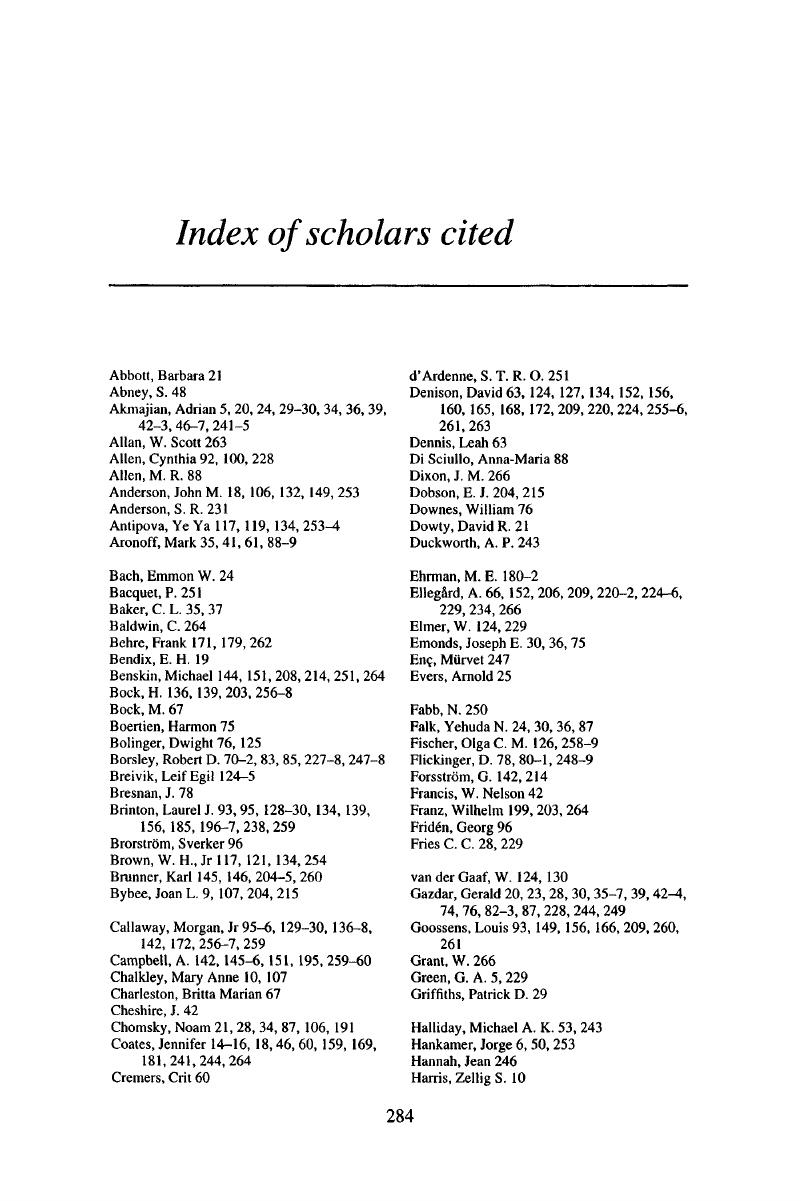Book contents
- Frontmatter
- Contents
- Dedication
- Preface
- List of abbreviations and references to primary texts
- 1 Basic properties of English auxiliaries
- 2 The morphosyntactic independence of auxiliaries
- 3 A formal interlude: the grammar of English auxiliaries
- 4 Distinguishing auxiliaries and verbs in early English
- 5 Identifying an ‘auxiliary group’ before Modern English: sentence-level syntax
- 6 Identifying an ‘auxiliary group’ before Modern English: further properties of ‘modals’
- 7 The developing modal semantics of early English ‘modals’
- 8 The status of modals and auxiliaries before Modern English
- 9 Auxiliaries in early Modern English and the rise of do
- 10 Conclusions
- Notes
- References
- Index of Scholars Cited
- General index
Index of Scholars Cited
Published online by Cambridge University Press: 04 August 2010
- Frontmatter
- Contents
- Dedication
- Preface
- List of abbreviations and references to primary texts
- 1 Basic properties of English auxiliaries
- 2 The morphosyntactic independence of auxiliaries
- 3 A formal interlude: the grammar of English auxiliaries
- 4 Distinguishing auxiliaries and verbs in early English
- 5 Identifying an ‘auxiliary group’ before Modern English: sentence-level syntax
- 6 Identifying an ‘auxiliary group’ before Modern English: further properties of ‘modals’
- 7 The developing modal semantics of early English ‘modals’
- 8 The status of modals and auxiliaries before Modern English
- 9 Auxiliaries in early Modern English and the rise of do
- 10 Conclusions
- Notes
- References
- Index of Scholars Cited
- General index
Summary

- Type
- Chapter
- Information
- English AuxiliariesStructure and History, pp. 284 - 286Publisher: Cambridge University PressPrint publication year: 1993

